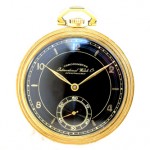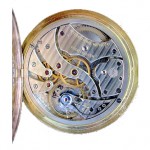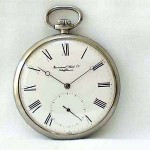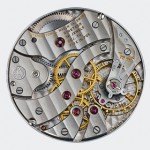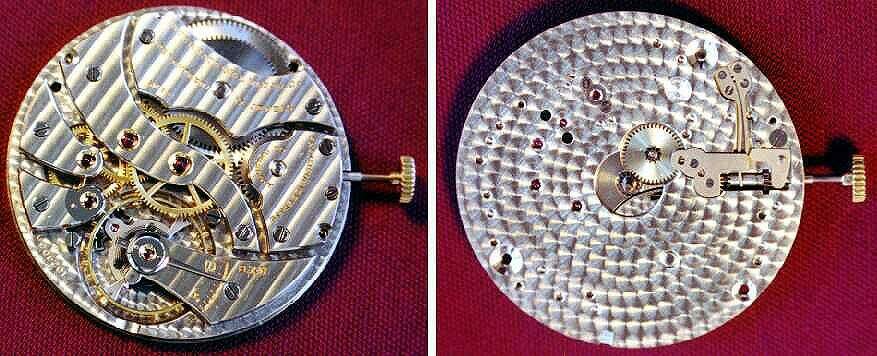Later IWC pocket watches, generally post-1930, are not an emphasis of this websie.
In addition to Calibre 67, IWC produced several “full bridge” movements, in which each wheel had its own bridge or cock. This design commenced with the ultra-thin calibre 95 in 1927, and evolved to somewhat thicker calibre 97 (Lepine) in 1930, and then its companion Calibre 98 Savonette_in 1936.
These calibres generally are the following:
| Calibre | Produced From/To | Quantity |
| 95 | 1927-1962 | 9600 |
| 95.2 | 1967-1973 | 5400 |
| 97 | 1930-1964 | 16200 |
| 972 | 1967-1973 | 3600 |
| 98 | 1936-1946 | 1200 |
| 982 | 1967-1973 | 3600 |
While watches with these movements can be easily found today, since they were more recently produced, as will be noted production was not large. This can be attributed to the Great Depression plus the ascendancy of the wristwatch.
All these movements were 37.8 mm in width, or 16 3/4 Ligne, like many of their predecessors. The Calibre 95 was a ultra-thin movement with a height of only 3.2 mm, while the others were just over a millimeter taller. The second iteration of each movement, denoted with the “2” following the basic calibre number involved a series of technical improvements: increased jeweling to 19 rubies (from 17 for the Calibre 95 of 15 or 16 for the others) and the addition of shock absorption.
In addition, after the quartz crisis of the early 1970s, which decimated the Swiss mechanical watch industry, for a time in the mid-70s IWC tried to become a specialty pocket watch manufacturer. While the experiment for the most part failed, IWC produced a small quantity of a large number of different pocket watches. A chart summarizing them is in this article written in 2002. By clicking on most reference numbers one can see an image of the model.
Images of back and under dial sides of a Calibre 95


